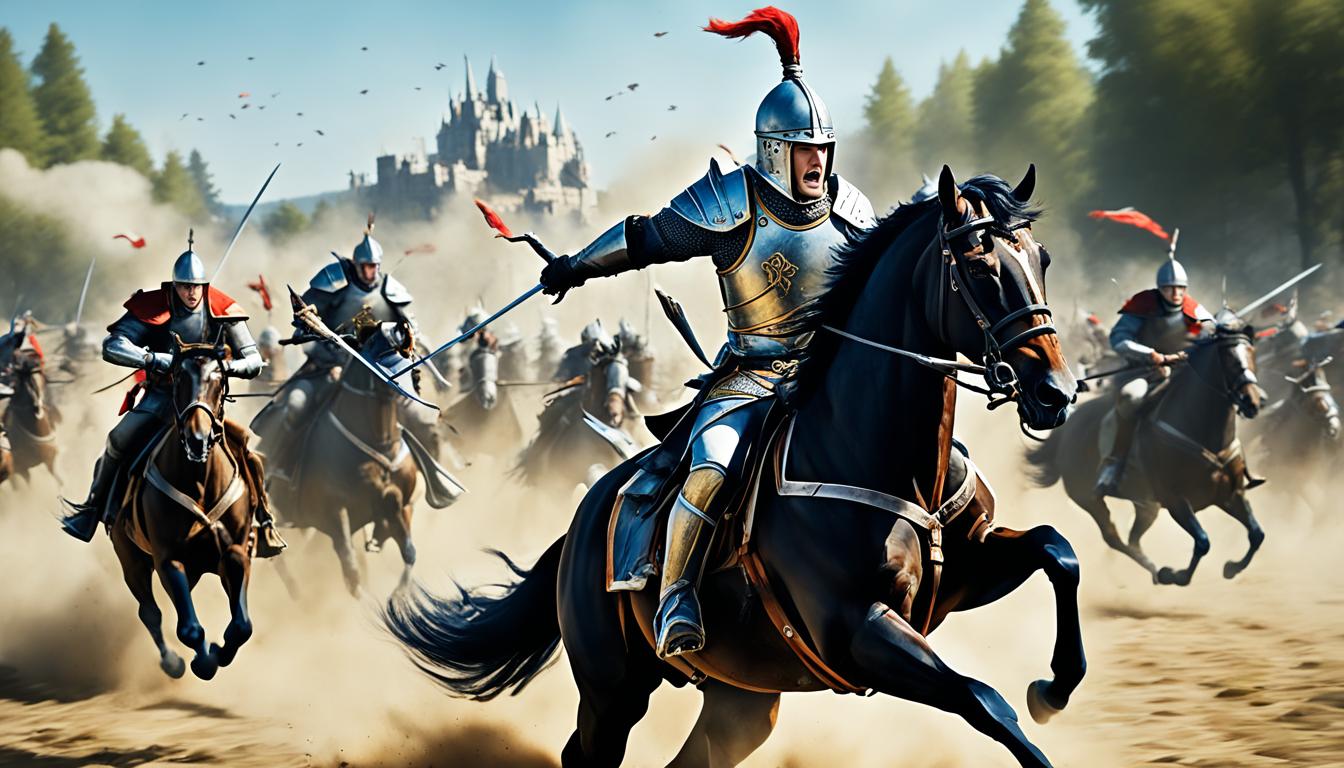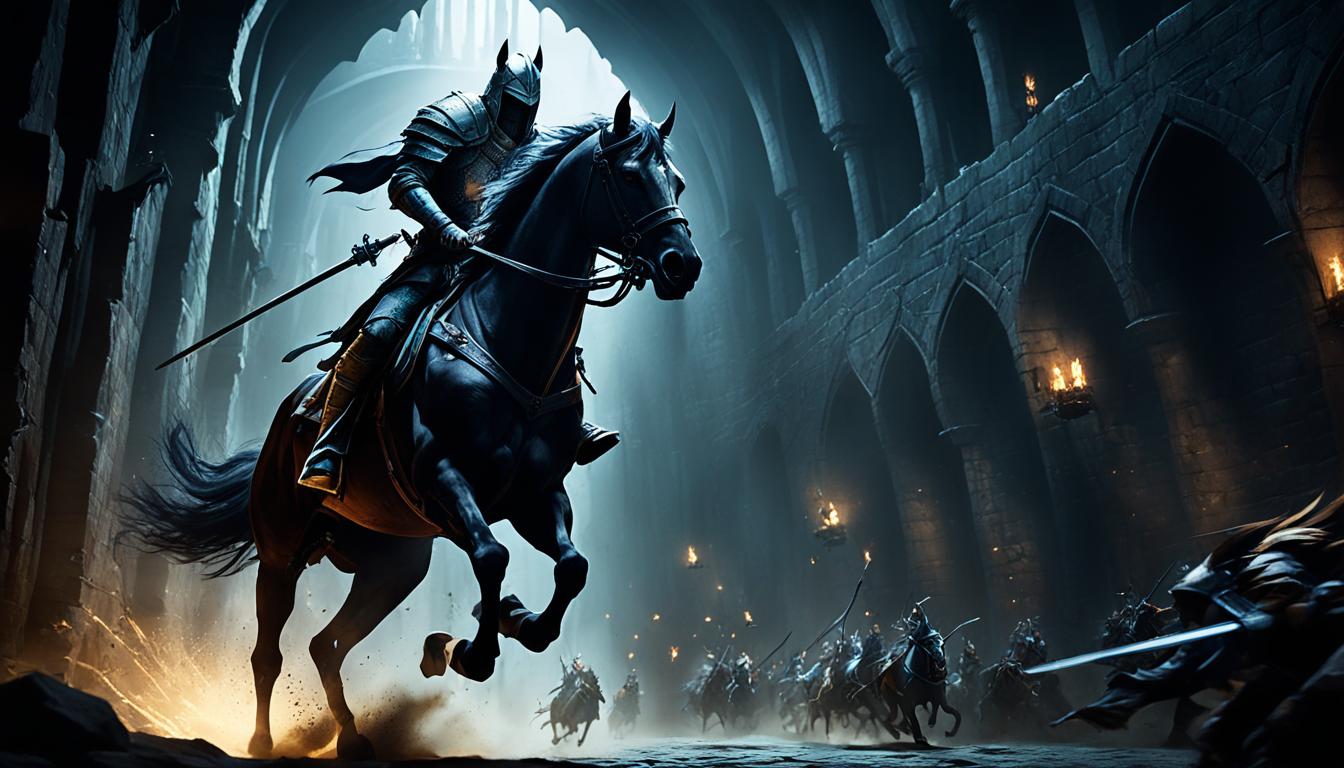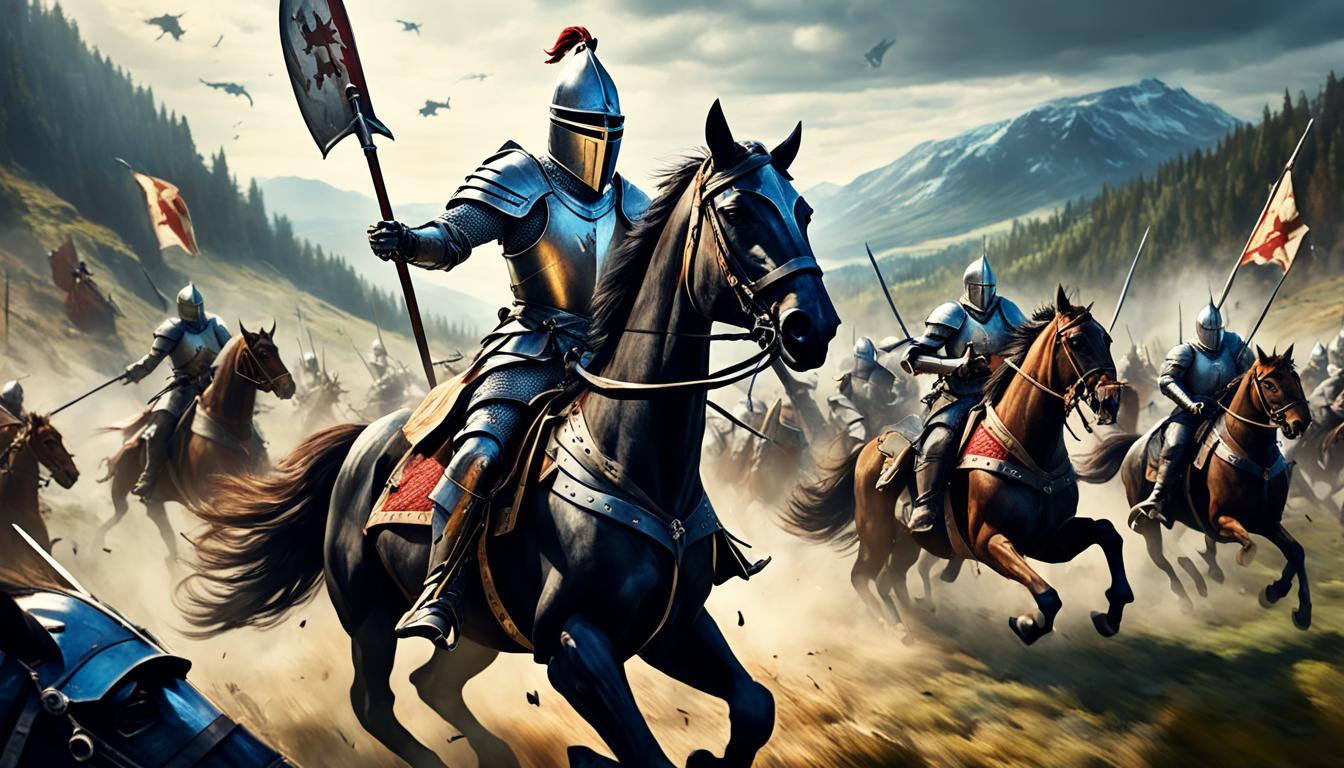Mounted Combat 5e Guide: Tips & Strategies
Mounted combat in Dungeons & Dragons (D&D) can provide players with a unique advantage on the battlefield. Whether you’re charging into battle on a horse, pegasus, or dragon, or using a party member as a mount, understanding the rules and strategies for mounted combat is crucial. In this guide, we’ll delve into the specific rules for mounted combat in 5th edition (5e) of D&D, explore different mount types, discuss the benefits of mounted combat, and provide tips and strategies for maximizing your advantage.
Key Takeaways:
- Mounted combat in D&D offers players a distinct advantage in battle.
- Understanding the rules and mechanics of mounted combat in 5e is essential for success.
- Different mount types, such as horses, pegasuses, and dragons, provide unique benefits.
- Mounts can increase your mobility, grant higher ground advantage, and access special feats and spells.
- Effective strategies, coordination with your mount, and utilizing specific feats can enhance your mounted combat abilities.
Why Use a Mount in Combat
Using a mount in combat can provide several advantages. Firstly, it increases your mobility on the battlefield, allowing you to quickly maneuver and reach different areas. Secondly, attacking from the back of a mount can give you higher ground, making it easier to strike downward at foes while they struggle to strike upward at you. Additionally, mounted combat can give you access to specific feats and spells that enhance your effectiveness in combat.

Enhanced Mobility
Being on a mount grants you increased movement speed, allowing you to cover more ground during a battle. This mobility advantage enables you to swiftly engage enemies, reposition yourself strategically, or retreat when needed. With a mount, you can effectively navigate difficult terrains and quickly close the gap between you and your adversaries. The heightened mobility can give you the upper hand in various combat scenarios.
Tactical Advantage
Attacking from the back of a mount can provide a significant tactical advantage. From this elevated position, you gain a clearer line of sight and can carefully observe the battlefield, identifying weaknesses and planning your moves accordingly. Moreover, your attacks from above can catch your opponents off guard, forcing them to adjust their defenses and making it harder for them to land successful strikes against you. This vantage point can help you maintain control over the battlefield and keep your enemies at bay.
Feats and Spells
Engaging in mounted combat opens up access to specific feats and spells that further enhance your combat abilities. The Mounted Combatant feat, for example, grants you advantages when attacking smaller creatures while mounted and provides protection for your mount against certain attacks. Additionally, various spells can be used to augment your mount’s abilities or grant you additional offensive or defensive capabilities. By utilizing these feats and spells, you can optimize your performance in mounted combat.
Mounting and Dismounting
Mounting and dismounting are essential skills to master for effective mounted combat in Dungeons & Dragons (D&D). To mount a creature, it must meet specific requirements to ensure a safe and successful ride. The following criteria must be fulfilled:
- The creature must be willingly mountable
- The creature must be at least one size larger than you
- The creature must have the appropriate anatomy for riding
Once you have identified a suitable mount, the process of mounting or dismounting takes half of your speed or movement. This means that if you have a movement speed of 60 feet, mounting or dismounting consumes 30 feet of that speed. It is important to plan your movements accordingly to optimize your actions in combat.
In some situations, your mount may be forcibly moved or knocked prone during combat. In such cases, you may need to make a Dexterity saving throw to avoid falling off your mount. This saving throw tests your ability to maintain your balance and stay mounted despite external forces.
Mounting and Dismounting Summary:
| Step | Description |
|---|---|
| 1 | Ensure the creature is willingly mountable. |
| 2 | The mount must be at least one size larger than you. |
| 3 | Verify that the creature has the appropriate anatomy for riding. |
| 4 | Use half of your speed or movement to mount or dismount. |
| 5 | Make a Dexterity saving throw when the mount is forcibly moved or knocked prone. |

Controlling a Mount
In mounted combat, there are two types of mounts: controlled mounts and independent mounts. Let’s take a closer look at each:
Controlled Mounts
Controlled mounts are typically controlled by the player and follow the player’s turn in initiative. They offer a range of actions that can be taken on the player’s turn, such as dashing, disengaging, or dodging. As the rider, you have direct control over the mount’s movements and actions, allowing for more coordinated strategies. This type of mount provides stability and reliability in combat, as it aligns with your intentions and can act in unison with you.
Independent Mounts
On the other hand, independent mounts have their own turn in initiative and can take a wider range of actions, including attacks. These mounts act autonomously and are not directly controlled by the player. They possess their own instincts and combat prowess, often relying on their inherent attributes and training to make decisions during battles. This type of mount can be a formidable force on the battlefield, providing unexpected attacks and unpredictable movements.
The control over a mount, whether it is a controlled mount or an independent mount, can be determined by the player or the Dungeon Master, depending on the situation. It is important to communicate and coordinate effectively with your DM and fellow party members to ensure smooth and strategic mounted combat encounters.
| Controlled Mounts | Independent Mounts |
|---|---|
| Controlled by the player | Autonomous actions |
| Action options tied to player’s turn | Own turn in initiative |
| Dashing, disengaging, dodging | Wide range of actions, including attacks |

Understanding the type of mount you have and its capabilities on the battlefield is essential for effective combat and strategizing. It enables you to make informed decisions, capitalize on the strengths of your mount, and devise tactics that exploit your mount’s unique attributes. Now that we’ve explored the different types of mounts, let’s move on to discussing various mounted combat strategies.
Mounted Combat Strategies
In mounted combat, having a strategic approach can make all the difference in maximizing your advantage on the battlefield. To enhance your effectiveness, consider employing the following strategies:
-
Utilize the Mounted Combatant Feat: One of the most powerful tools in your arsenal is the Mounted Combatant feat. This feat grants you several advantages when attacking smaller creatures while mounted, making it easier to hit and deal significant damage. Additionally, it offers protection to your mount by imposing disadvantage on attack rolls from creatures targeting your mount. By taking this feat, you enhance not only your own combat abilities but also ensure the longevity and durability of your mount.
-
Exploit Other Mounted Combat Feats and Spells: Consider exploring other feats and spells that can further enhance your mounted combat abilities. Feats like War Caster and Savage Attacker can provide additional benefits, such as advantage on concentration checks or extra damage on critical hits. Spells like Enlarge/Reduce or Haste can also greatly boost your mount’s capabilities, allowing for even more devastating attacks or improved mobility on the battlefield.
-
Coordinate with Your Mount: A key aspect of mounted combat is the synergy between you and your mount. By coordinating your actions and positioning with your mount, you can execute powerful maneuvers and gain a tactical advantage over your opponents. For example, positioning your mount to flank enemies can grant you advantage on your attack rolls, increasing your chances of landing critical hits. Similarly, utilizing your mount’s mobility to quickly reposition yourself on the battlefield can surprise your foes and disrupt their formations.
To illustrate these strategies, let’s take a look at the following table, which showcases the advantages granted by the Mounted Combatant feat:
| Advantage | Description |
|---|---|
| Advantage on attack rolls | When attacking smaller creatures while mounted, you gain advantage on your attack rolls, increasing your chances of hitting your target. |
| Ability to force attacks on yourself | Instead of allowing attacks to hit your mount, you can choose to make them target you instead. This not only prevents damage to your mount but also lets you take advantage of your own defenses. |
| Advantage on Dexterity saving throws | In addition to offensive benefits, the feat also grants you advantage on Dexterity saving throws to avoid spells or effects that target multiple creatures. This enhances your survivability and agility in combat situations. |

Conclusion
Mounted combat in D&D 5e presents a thrilling and dynamic aspect of gameplay, offering players a multitude of strategic possibilities on the battlefield. By familiarizing yourself with the mounted combat rules and mechanics, you can leverage the advantages provided by riding on the back of a powerful mount.
The diverse selection of mount types in D&D 5e, from traditional horses to extraordinary creatures, allows you to truly customize your combat experience. Whether you prefer the speed and agility of a horse or the raw power of a dragon, your chosen mount can greatly enhance your effectiveness in battle.
Additionally, mastering mounted combat strategies and utilizing relevant feats and spells, such as the Mounted Combatant feat, can greatly amplify your advantage. By leveraging your mount’s mobility, utilizing tactical positioning, and coordinating attacks, you can dominate the battlefield with precision and finesse.
So, saddle up, brave adventurer, and embark on your mounted combat journey in Dungeons & Dragons 5e. Unleash the full potential of mounted combat, and experience the exhilaration of charging into battle, wielding your lance, and emerging victorious by utilizing the unparalleled benefits that mounted combat offers.